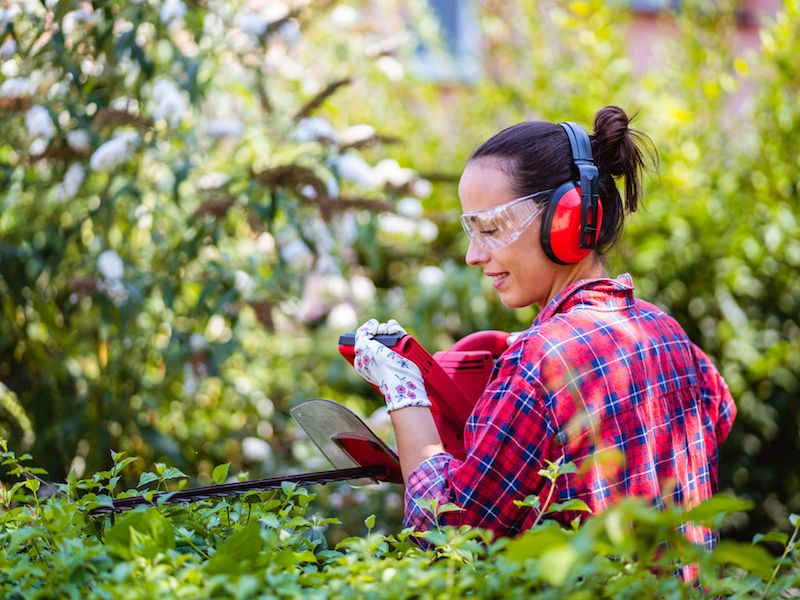
Safeguarding your hearing is similar to eating right. It’s hard to know where to begin even though it sounds like a good idea. This is especially true if you don’t consider your daily environment to be especially noisy and there aren’t any apparent risks to your ears. But daily life can put stress on your ears and your senses, so doing these hearing protection techniques can help safeguard your auditory acuity.
If you want to keep enjoying the sounds around you, you need to do everything you can to impede down the degeneration of your hearing.
Tip 1: Ear Protection You Can Wear
The most simple and sensible way that you can safeguard your ears is to protect your ears. This means taking basic steps to diminish the amount of loud and harmful noises you’re subjected to.
This means that when it’s required most people will want to wear ear protection. Two general forms of protection are available:
- Ear Plugs, which are put in the ear canal.
- Ear Muffs, which are placed over the ears.
Neither form of hearing protection is inherently better than the other. Each type has its positive aspects. What’s important is that you get some hearing protection that you feel comfortable wearing.
Tip 2: Be Aware When Sound Becomes Dangerous
But how can you tell when to use hearing protection? Noise that is painful is normally considered harmful. But much lower volumes of sound can damage your ears than you might believe. The sounds of traffic, as an example, are loud enough to start injuring your hearing after just a couple of hours. An important step in safeguarding your hearing, then, is recognizing when sound becomes harmful.
Typically sounds become dangerous at the following levels:
- 85 decibels (dB): This volume of sound is dangerous after about two hours of exposure. This is the volume of sound you’d expect from a busy city street or your hairdryer.
- Over 100 dB: Your hearing can be very quickly injured by this. Anything above this limit can damage your hearing in minutes or seconds. For instance, jet engines and rock concerts will injure your ears in 30 seconds.
- 95-100 dB: This is about the sound level you’d expect from farm equipment or the normal volume of your earbuds. After around 15-20 minutes this volume of sound becomes harmful.
Tip 3: Your Phone Can Be a Sound Meter
Now that we have a general idea of what volume of sound may be harmful, we can take some steps to ensure we minimize our exposure. But in real life, it can be challenging trying to determine what is too loud and what isn’t.
That’s where your smartphone can become a handy little tool. Sound meter apps exist for every type of smartphone.
Having a live sound meter with you will help you evaluate everything you’re hearing in decibels, so you’ll have a far better understanding of what dangerous levels actually sound like in your everyday life.
Tip 4: Keep an Eye on Your Volume Buttons
A smartphone with earbuds is usually the way people listen to music nowadays. This creates a risky situation for your hearing. Your ears can be significantly damaged if you set your earbuds to high over a long period of time.
That’s why safeguarding your ears means keeping a focused eye on your volume management. You should never raise the volume in order to drown out sounds elsewhere. in order to make sure that volume doesn’t get too high, we recommend using volume configurations or app settings.
Earbud use can become something of a negative feedback loop if your hearing starts to decline; you could find yourself consistently increasing the volume of your earbuds in order to compensate for your faltering hearing, and in the process doing more harm to your ears.
Tip 5: Have Your Hearing Checked
You might think of a hearing exam as something you schedule when your hearing has already started to diminish. Without a baseline to compare results to, it’s not always easy to detect a problem in your hearing.
Generating data that can be used for both diagnostic applications and for treatment can be best accomplished by scheduling a hearing examination and screening. This will give you some extra perspective for future hearing decisions and ear protection.
Keep an Eye on Your Hearing
It would be perfect if you could constantly protect your hearing without any problems. But challenges are will always be there. So safeguard your ears whenever you can, as often as possible. You should also have your ears tested regularly. Put these suggestions into practice to improve your chances.
